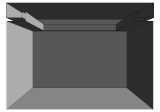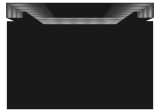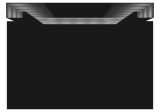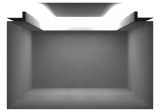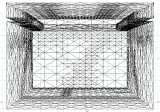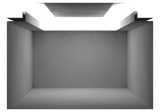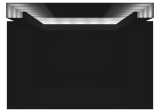TAPESTRY: The Art of Representation and Abstraction
Indirect Lighting Case Study
The most obvious example of a situation in which the "enabling assumptions" of typical rendering applications fail is indirect lighting. Indirect lighting like that shown here, with point lights "tucked behind" a soffit detail at the ceiling, doesn't reach your eye without at least TWO diffuse bounces--once off the adjacent ceiling and wall, and once off of the room surfaces we mean to look at (at or below eye level).
The images below show how various algorithms either ignore the shadows cast by the surrounding walls, or fail to distribute light past the first bounce. Only the radiosity algorithm, which was developed to address diffuse interreflections, comes close to providing a correct solution. (click on individual images to enlarge.)
Last updated: April, 2014



